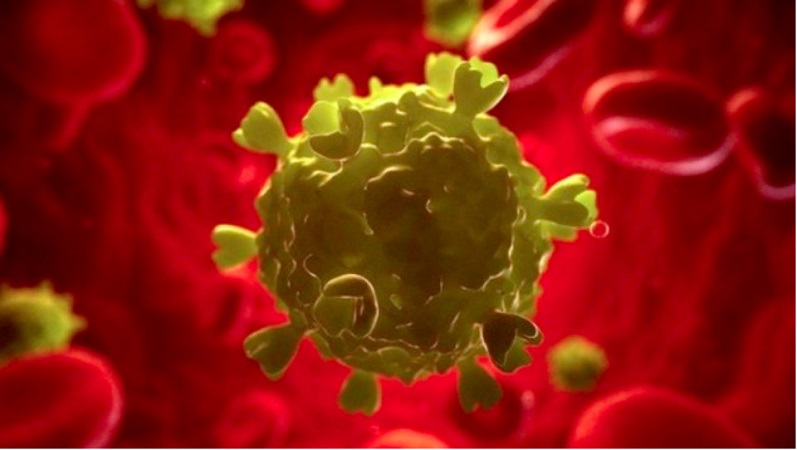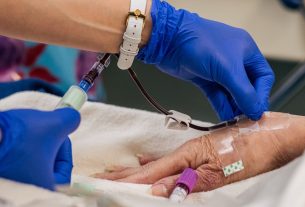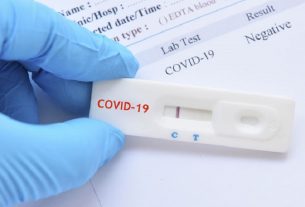In the 80s, it was a bad stranger they called “gay cancer.” Now, although still far from finding a cure, having HIV has ceased to be a death sentence. This condition, with which 37, 9 million people live in the world, today is treated as chronic because the current treatment allows the seropositive to live a healthy life.
powered by Rubicon Project
From singer Freddy Mercury to sports star Magic Johnson to actor Charlie Sheen, many celebrities have revealed having HIV over the past few decades. Now, questions about this evil have returned to the fore with the case of adult film actor Nacho Vidal, who allegedly had contracted the virus. Finally, it was learned that it was a false positive. Therefore, here, we present basic information to understand what HIV / AIDS is and at what point we are in the fight against this epidemic.
HIV in Peru
In Peru, 72,000 men and women live with HIV, and more than 51,000 have access to free treatment, but some 20,000 people are unaware of their serological status, according to data from the Ministry of Health.
Since 2010, new HIV infections have increased by 24%, and AIDS-related deaths have increased by 14%, according to UNAIDS.
But our country, where the treatment is free, is also the one that has registered the greatest reduction in AIDS-related deaths in Latin America (62% between 2000 and 2016).
HIV is not the same as AIDS
After decades of research in this regard, even today, in many cases, AIDS is still used as a synonym for HIV. But they are not the same.
According to the World Health Organization, the human immunodeficiency virus (HIV) is infecting “the cells of the immune system and destroying them or disrupting their functioning, which leads to the progressive deterioration of the system and ends up producing an immune deficiency. ” Then, the body gradually loses the ability to defend itself and becomes more vulnerable to infections and other diseases.
A person with HIV in their system can go years without serious problems. AIDS, on the other hand, “represents the most advanced stages of HIV infection. It is defined by the appearance of any of more than twenty opportunistic infections or cancers linked to HIV.”
Then, the person with HIV, not having the capacity to respond to diseases, finally acquires “opportunistic infections” (tuberculosis, pneumonia). The patient ends up dying because of these diseases that take advantage of the weakened immune system.
Does HIV have symptoms?
UNAIDS, the United Nations program for this epidemic, notes that most people infected with HIV do not know they have contracted the virus.
Less than 10% of people have symptoms, which is usually “a pseudo-flu picture with fever, headache, rashes or sore throat.” That is, the symptoms are very similar to those of other diseases and therefore, are challenging to identify.
Symptoms occur “at the time of seroconversion. Seroconversion refers to the development of antibodies against HIV and usually occurs between one and two months after contracting the infection,” says WHO.
How is HIV transmitted?
Unprotected sex (anal and vaginal) is the main route of HIV transmission. In addition, the virus can be acquired by the use of syringes or needles that have been used in carriers. To a lesser extent, the virus can be transmitted from mother to child during pregnancy, during childbirth, or through breastfeeding.
Only the blood, semen, pre-seminal fluid, rectal secretions, vaginal secretions, and breast milk of a person with HIV can transmit the virus. For transmission to occur, the Centers for Disease Prevention and Control details, “these fluids must come into contact with the mucous membranes or with injured tissues of the other person or be injected directly into the bloodstream ( with a needle or syringe) for transmission to occur. The mucous membranes are found inside the rectum, vagina, penis, and mouth. “
HIV is not transmitted by sweat or saliva, or by using the same toothbrush since the virus survives only a fraction of a second in the environment.
The importance of HIV testing
Then, because the symptoms can be confused with that of other ills and because they occur in a few cases, it is vital to have an HIV test periodically (every three months) if you have an active sex life or if you have had a risky sexual relationship.
Currently, various state and private entities provide free rapid tests for HIV. These have, depending on the brand, reliability higher than 99.8%, according to UNAIDS. Therefore its use has been extended. However, in this type of tests, there is a “window period.” That is, they can only detect HIV antibodies in the blood after three months of infection. Then it is important to have the first test and then a new one after three months to avoid that “window period.”
In addition to the tests that detect HIV antibodies, there are antigen tests, which detect antigens (a part of the virus), and nucleic acid tests, which examine the presence of HIV in the blood. These last two are more specialized and are often used to confirm a positive result in a rapid test. A quick check can give a “false positive,” and this may be because the person has an autoimmune disease such as lupus or Reiter’s syndrome.
HIV treatment
Antiretroviral treatment (HAART) is the therapy that is used in HIV-positive people, and its objective is that the virus does not continue its progress and continues to replicate in the body. That is, these drugs “sleep” on the virus, which prevents HIV from weakening the immune system, and the person can have a practically normal life.
The most recent UNAIDS report shows that people with antiretroviral treatment have a life expectancy very close to a person considered healthy. It is clear that these drugs do not eliminate HIV, but keep it at minimum levels (undetectable).
Strategy 90/90/90
The overall objective of the fight against the AIDS epidemic is that by 2020 90% of people living with HIV know their diagnosis, that 90% of people diagnosed with HIV receive constant antiretroviral therapy and that 90 % of people receiving antiretroviral therapy have viral suppression (undetectable).
A recent study, the most complete so far, confirmed that seropositive people with undetectable viral load do not transmit the virus.
While the number of AIDS-related deaths in 2018 fell to 770,000, a third less than in 2010, global efforts to eradicate the disease are stagnant due to reduced funding.
More than three out of five HIV-positive people in the world – 23.3 million of 37.9 – receive antiretroviral treatments; a record proportion notes UNAIDS in its annual report.
Last year’s death toll is somewhat lower than in 2017 (800,000) and a third lower than in 2010 (1.2 million). And it is well below the catastrophe recorded in 2004 when the AIDS virus claimed the lives of 1.7 million people.
The number of new infections remains stable compared to previous years (1.7 million).
However, these global figures hide large regional differences, notes UNAIDS, which warns that the fight against the disease is not progressing sufficiently.
In general, the fall in the number of deaths and the best access to treatments are explained by the advances made in southern and eastern Africa, the continent most affected by AIDS.
In other parts of the world, some indicators are worrisome.
In Eastern Europe and Central Asia, the number of new infections has skyrocketed 29% since 2010. Also, the number of deaths increased by 5% in these regions and 9% in the Middle East and North Africa in these last eight years.
In the case of Latin America, the rate of new infections of the AIDS virus grew 7%. Proportionally, Chile is, with 34%, the country in the region where cases increased the most, followed by Bolivia (22%), Brazil and Costa Rica (21%).
Some 71,000 people are carriers of HIV in Chile, of which 10,000 do not know their condition and 45,000 are under treatment, according to the Ministry of Health of this country.
On the other hand, El Salvador is the country that reduced contagion the most with 38%, followed by Nicaragua (29%), Colombia (22%) and Ecuador (12%).
Follow us on twitter:
VIH/Sida | Pruebas, síntomas y tratamiento disponible en Perúhttps://t.co/bMHCK0eZpU
— Tecno y Ciencia EC (@tecnoycienciaEC) September 9, 2019




